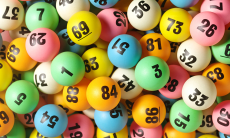
A little while ago I wrote the first part of this series on how to improve your ability to remember. I describe learning these techniques in that way because while they may enable you to remember more information at a time, they cannot actually alter your inherent memory or your brains ability to remember. They just use information we know about brain functioning and storage to increase how much we learn. The techniques we went through last time were useful to help us with remembering lists or information with a large amount of details attached, but in the modern world the use of numbers to understand information is invaluable with meaning attached to dates, measurements and other figures. With this in mind, we are going to now look at how we can make it easier to remember numbers in collaboration with the techniques we looked at last time, but if you have yet to read my previous article on the topic, I highly recommend you take a little while to get comfortable with using those techniques first.
Sometimes the numbers we need to remember are not linked to any other piece of information. An example of this is in the stage tricks of a magician, who may mystify his audience by recalling large strings of numbers, seeming to have no end to his memory capacities, or when a mathematician wishes to remember an important figure such as Pi, which is useful in equations, to a large number of digits. This quality of separation from all other memories makes them harder to remember since, as we learnt in the previous article, when information is linked it is easier to recall. By attaching greater meaning to a number, our mind finds it easier to recall within a particular context. So an easy way to improve memory of a number is to attach meaning to it. I may remember the number 23991, by remembering it features the digits of my sister’s birthday, if she were born on the 23rd of September 1991. Of course a problem with this is that not all numbers are going to have a meaning related to the person, which they can then attach to it. Also, some numbers will just be too long to attach a meaning to. Miller’s Law in Psychology states that a human will only ever be able to hold 7 plus or minus 2 objects in his working memory. This may be words, numbers or pictures. However, by using a technique known as 'chunking' people are able to remember much longer pieces of information. Within this technique, a list of more numbers can be remembered by splitting the whole list into ‘chunks’. So a 12 digit number may be remembered by splitting into 4 digit chunks, which we can then use the earlier principle to remember by attaching information such as a famous event of that year to it. If the first four digits were 1995, I could remember it as the year I was born. Now, because I am only remembering 3 dates instead of remembering 12 individual numbers, I only have to remember 3 pieces of information. By subdividing pieces of information further and attaching meaning to each one, I can remember extremely long strings of numbers.
The second key technique used builds upon the ‘memory palace’ technique discussed in the last article. This means that if numbers need to be remembered in relation to much bigger pieces of information, such as dates of historical events, or the number of participants in a particular experiment, they can be. The last time we used this technique we pictured memorable images to remember facts or names, but to link numbers to these pieces of information we need to picture some form of image to represent these numbers. The majority of people using this technique have a symbol which appears in their ‘palace’ for each digit. For example a 1 can be represented by a candlestick, a 2 by a Swan, a 3 by a love heart and so on. In this ‘code’ the images used are memorable because they remind us of the shape of the numbers, where the 2 is the swan’s neck and the 3 is the top of the love heart. The order of these digits into a bigger number can be learnt by the order in which your objects interact as you walk around your imaginary place. For example, to remember the number 213 I can imagine seeing the swan (2), who then notices a candlestick (1), before he falls in love with it (3). The idea of a swan falling in love with a candlestick is funny, and that makes it memorable. Another way to code the numbers into your ‘palace’ is to use objects that rhyme with the numbers, for example where 1 is a gun, 2 is a queue, 3 is a bee and continuing up to 9, but it is important that the objects you use are not too commonplace, since the more unconventional they are, the better you will remember them.
Hopefully these techniques will allow you to study more efficiently and help you do well at school, but ultimately they’re a lot of fun and are a good way to impress friends!
Image from: https://static-secure.guim.co.uk/sys-images/Guardian/Pix/pictures/2014/2/5/1391621136269/Lottery-Balls-014.jpg

0 Comment:
Be the first one to comment on this article.